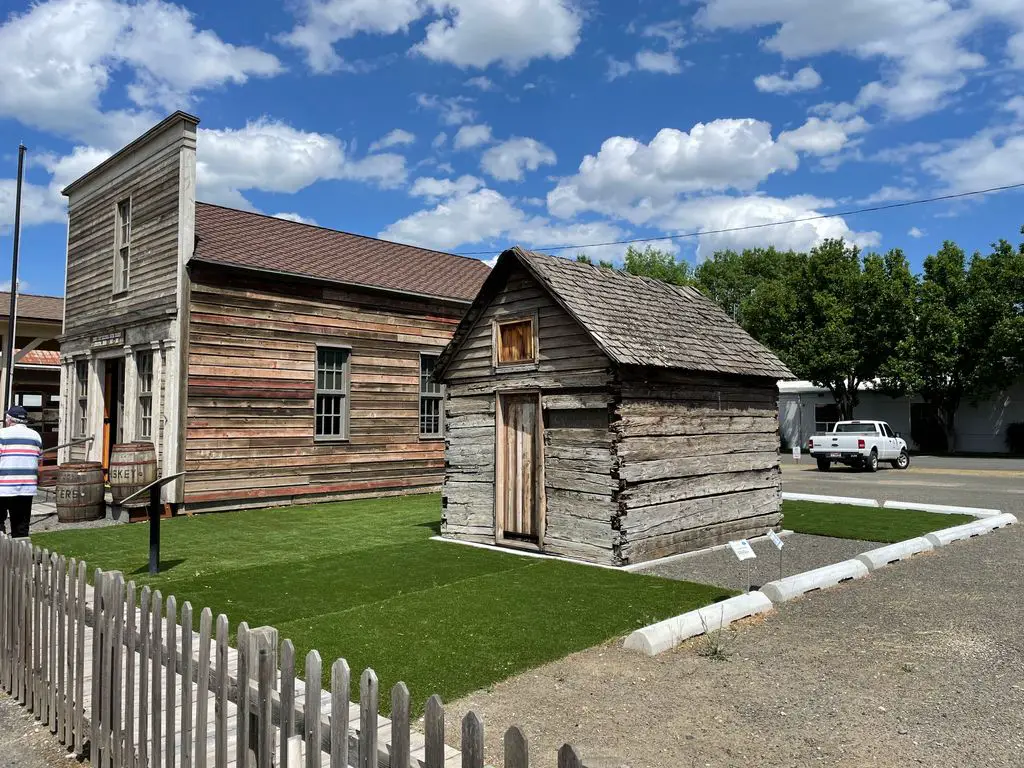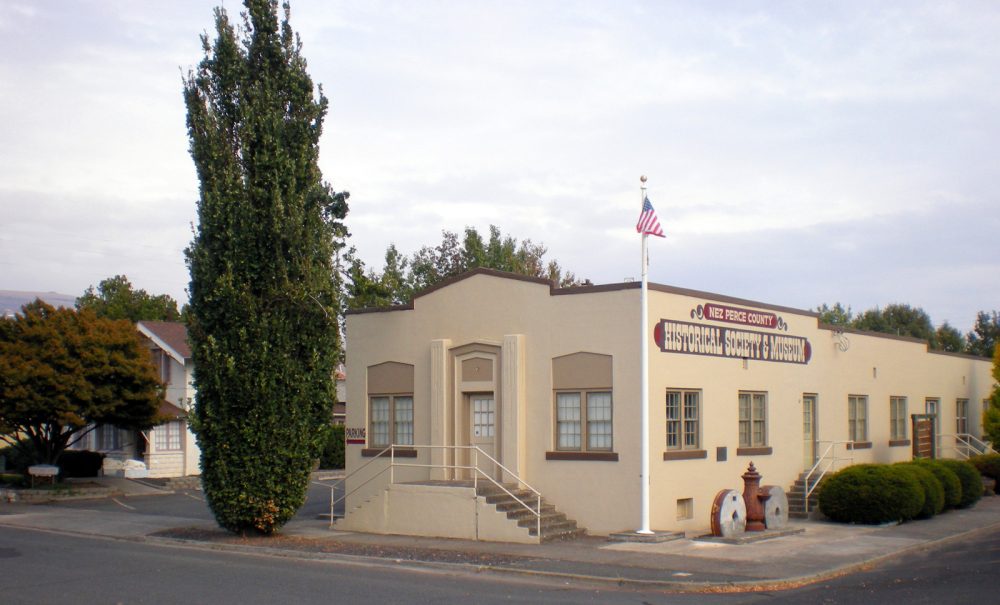
The Nez Perce War History Museum: A Comprehensive Look at Interpretation and Remembrance
The term "Nez Perce War History Museum" refers not to a single, standalone institution but rather to a distributed network of interpretive sites, battlefields, and visitor centers primarily managed by the Nez Perce National Historical Park (NPNHP), an entity of the U.S. National Park Service. This complex, spanning four states (Idaho, Oregon, Washington, and Montana), functions as a living, comprehensive museum, dedicated to preserving and interpreting the history and culture of the Nimiipuu (Nez Perce people) and the pivotal 1877 Nez Perce War. Through its multi-faceted approach, the NPNHP offers a profound educational experience, illuminating the causes, events, and enduring legacy of one of the most significant conflicts between Native American tribes and the United States government.
Historical Context: The Genesis of Conflict
To fully appreciate the interpretive efforts of the NPNHP, an understanding of the Nez Perce War’s historical roots is essential. The Nimiipuu, a Sahaptian-speaking people, historically occupied a vast and rich territory encompassing parts of present-day Idaho, Oregon, and Washington. Their culture was deeply connected to the land, characterized by a semi-nomadic lifestyle that followed seasonal resources, including salmon runs, camas root harvests, and buffalo hunts east of the Rocky Mountains. They were renowned for their horsemanship and selective breeding of the Appaloosa horse.
Early interactions with Euro-Americans were largely peaceful, marked by trade and the Nez Perce’s willingness to assist explorers like Lewis and Clark. However, the mid-19th century brought escalating pressures. The Walla Walla Council of 1855 saw the Nez Perce cede significant lands but retain a vast reservation, including their ancestral Wallowa Valley. This treaty, however, was quickly undermined by the discovery of gold in Nez Perce territory in 1860, leading to a massive influx of miners and settlers.

In response to these encroachments, the U.S. government convened another treaty council in 1863. Under duress and with only a minority of Nez Perce leaders present, a new treaty was signed, drastically reducing the reservation by nearly 90% and excluding the Wallowa Valley. This "Thief Treaty" or "Steal Treaty" was vehemently rejected by several bands, particularly those led by Chief Joseph (Hinmatóowyalahtq̓it), Looking Glass, White Bird, and Toohoolhoolzote, who became known as the "non-treaty" Nez Perce. They maintained their inherent right to their ancestral lands, never having ceded them.
For over a decade, tensions simmered. The U.S. government repeatedly attempted to force the non-treaty bands onto the diminished reservation. In 1877, a final ultimatum was issued. Faced with the threat of military force, the non-treaty Nez Perce reluctantly agreed to move. However, a series of tragic events—including the murder of several white settlers by a small group of young Nez Perce warriors seeking revenge for past injustices—ignited the war.
Thus began the epic 1,170-mile flight of approximately 750 Nez Perce men, women, and children, accompanied by over 2,000 horses, pursued by the U.S. Army under Generals O.O. Howard and Nelson A. Miles. Their remarkable strategic and tactical prowess allowed them to outmaneuver and fight off a superior military force through some of the most rugged terrain in North America. Key engagements included White Bird Canyon (a Nez Perce victory), the Clearwater Battlefield, the brutal surprise attack at Big Hole, and the final siege at Bear Paw, where Chief Joseph delivered his poignant surrender speech, "From where the sun now stands, I will fight no more forever." Despite their hopes, the Nez Perce were not allowed to return to their homeland but were exiled to Indian Territory (present-day Oklahoma) and later to the Colville Reservation in Washington.
The Nez Perce National Historical Park: A Distributed Museum
The Nez Perce National Historical Park (NPNHP), established in 1965, serves as the primary "Nez Perce War History Museum." Unlike traditional museums confined to a single building, the NPNHP is a constellation of 38 separate sites, each holding significance to Nez Perce history and culture, stretching across the traditional Nez Perce homeland and along the arduous flight route of 1877. This multi-site structure allows visitors to experience the history in situ, connecting directly with the landscapes where pivotal events unfolded.
Core Interpretive Approaches:
The NPNHP’s interpretive strategy is deeply rooted in presenting a comprehensive, nuanced narrative that incorporates multiple perspectives, particularly those of the Nez Perce people. This is achieved through:
-

Site-Specific Interpretation: Each of the 38 sites tells a part of the larger story.
- Spalding, Idaho (Headquarters and Main Visitor Center): This is the administrative heart of the park and its most extensive visitor center. It houses comprehensive exhibits that explore Nez Perce culture, traditional lifeways, the impact of Euro-American contact, treaty negotiations, and the lead-up to the war. Artifacts, historical photographs, maps, and multimedia presentations offer a deep dive into Nimiipuu heritage. It also features a traditional Nez Perce earthlodge, providing insights into their architecture and communal living.
- White Bird Battlefield (Idaho): The site of the first major engagement, a decisive Nez Perce victory. Interpretive panels guide visitors through the battlefield, explaining the tactics employed by both sides and the reasons for the U.S. Army’s defeat.
- Clearwater Battlefield (Idaho): This site marks one of the larger battles, a tactical draw that forced the Nez Perce to continue their retreat. The interpretive displays here focus on the strategic decisions and the human cost of the conflict.
- Big Hole National Battlefield (Montana): While managed as a separate unit by the NPS, it is intrinsically linked to the NPNHP’s narrative. This site commemorates the devastating pre-dawn surprise attack on the sleeping Nez Perce camp, resulting in heavy casualties, primarily women and children. The museum at Big Hole offers a poignant look at the brutality of the war and the resilience of the survivors.
- Bear Paw Battlefield (Montana): Also a separate NPS unit, this is the site of the final siege and Chief Joseph’s surrender. Interpretive trails and markers detail the final days of the pursuit, the strategic encirclement, and the emotional weight of the Nez Perce’s decision to yield.
- Other Sites: Numerous other locations, such as the Lolo Trail (a traditional Nez Perce route through the Bitterroot Mountains), Camas Prairie (a vital food gathering area), and Fort Lapwai (a significant military and agency presence), provide crucial context to the journey, resource utilization, and interactions before and during the war.
-
Multivocal Storytelling: The NPNHP strives to present the Nez Perce War not solely from the U.S. Army’s perspective (which often dominated earlier historical accounts) but equally, if not primarily, from the Nimiipuu point of view. This is achieved through:
- Oral Histories: Incorporating the descendants’ narratives, traditional stories, and ancestral knowledge.
- Nez Perce Voices: Using quotes from Chief Joseph and other Nez Perce leaders, as well as the testimonies of survivors.
- Cultural Demonstrations: At sites like Spalding, Nez Perce cultural specialists share traditional arts, crafts, and practices, connecting visitors to the living culture.
-
Educational Programs and Research: The NPNHP is a hub for educational outreach, offering programs for schools, guided tours, and public lectures. It also supports research into Nez Perce history, ethnography, and archaeology, continually enriching its interpretive materials and ensuring historical accuracy.
Thematic Interpretation and Core Messages
The interpretive framework of the NPNHP emphasizes several key themes:
- Sovereignty and Self-Determination: Highlighting the Nez Perce’s inherent right to their lands and way of life, and their struggle to maintain it against overwhelming odds.
- Broken Treaties and Injustice: Exposing the pattern of U.S. government policies that led to land dispossession and conflict.
- Cultural Resilience: Showcasing the enduring strength of Nez Perce culture, language, and spiritual traditions despite immense hardship and forced assimilation efforts.
- The Human Cost of War: Illustrating the profound suffering, loss, and trauma experienced by both Nez Perce and U.S. soldiers, with a particular focus on the devastating impact on Nez Perce families.
- Leadership and Strategy: Examining the remarkable military leadership of the Nez Perce chiefs and the extraordinary logistical feat of their retreat.
- Legacy and Remembrance: Emphasizing the ongoing relevance of the Nez Perce War to contemporary Native American issues, land rights, and the importance of historical memory.
Significance and Enduring Legacy
The Nez Perce National Historical Park, functioning as the quintessential "Nez Perce War History Museum," is invaluable for several reasons. It serves as:
- A Place of Remembrance and Healing: For the Nez Perce people, it is a sacred landscape where their ancestors fought, suffered, and demonstrated unparalleled courage. It provides a space for cultural continuity and healing.
- An Educational Beacon: It educates countless visitors about a critical chapter in American history, challenging simplistic narratives and fostering a deeper understanding of Native American experiences.
- A Model for Historical Interpretation: Its commitment to presenting multiple perspectives and utilizing diverse sources, including oral traditions, sets a high standard for historical sites.
- A Catalyst for Dialogue: By confronting the difficult truths of the past, the NPNHP encourages reflection on justice, reconciliation, and the ongoing relationship between Indigenous peoples and the United States.
In conclusion, the "Nez Perce War History Museum" is a powerful and distributed interpretive landscape. Through the meticulous preservation of its sites, the nuanced storytelling at its visitor centers, and its unwavering commitment to the Nez Perce perspective, the Nez Perce National Historical Park ensures that the epic journey, profound sacrifices, and enduring spirit of the Nimiipuu people are remembered, understood, and honored for generations to come. It stands as a testament to the resilience of a people and a vital lesson in the complexities of American history.


